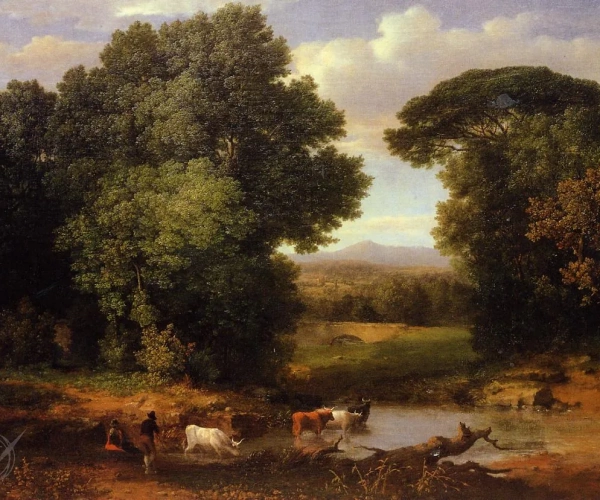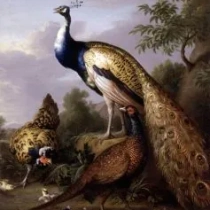A Bit Of Roman Aqueduct
"A Bit Of Roman Aqueduct" by George Inness is a masterful testament to the artist's profound connection with nature and his ability to transcend traditional landscape painting. This mesmerizing artwork, created in the 19th century, captures the essence of the Roman countryside, where the remnants of an ancient aqueduct stand as silent witnesses to the passage of time. Inness, known for his luminist style, imparts an ethereal quality to the scene. The soft, golden light gently bathes the landscape, casting a tranquil glow over the entire composition. The play of light and shadow is nothing short of sublime, as it dances across the centuries-old stones of the aqueduct, infusing them with an otherworldly radiance.
What sets "A Bit Of Roman Aqueduct" apart is Inness' profound spiritual sensibility. The landscape, though meticulously rendered, is more than just a physical representation; it serves as a metaphor for the human experience. The crumbling aqueduct symbolizes the passage of time and the impermanence of all things, while the surrounding landscape reminds us of the eternal beauty of nature.
Inness' use of color is equally remarkable. He employs a muted palette of earthy tones, with hints of greens and blues, which creates a sense of harmony and serenity. This restrained color scheme allows the viewer to focus on the play of light and the intricate details of the aqueduct.
The composition is carefully balanced, with the aqueduct forming a central axis around which the landscape unfolds. Inness' meticulous attention to detail is evident in the intricate rendering of each stone in the aqueduct, as well as the delicate foliage that surrounds it. Every element in the painting has been thoughtfully considered and executed.
In "A Bit Of Roman Aqueduct," George Inness invites us to contemplate the cyclical nature of existence, where the old gives way to the new, and the timeless beauty of nature endures. It is a work that transcends its time and place, inviting viewers to connect with the eternal through the lens of a decaying relic of the past.







No Comments Yet...